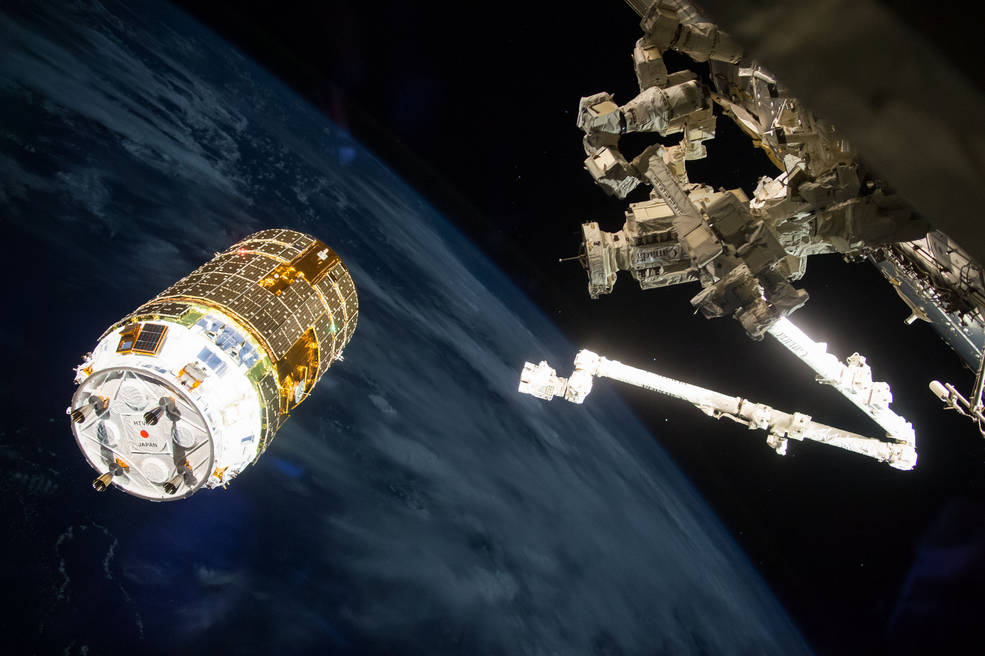NASA Mission Gets Its First Snapshot of Polar Heat Emissions

The PREFIRE mission will help develop a more detailed understanding of how much heat the Arctic and Antarctica radiate into space and how this influences global climate.
NASA’s newest climate mission has started collecting data on the amount of heat in the form of far-infrared radiation that the Arctic and Antarctic environments emit to space. These measurements by the Polar Radiant Energy in the Far-Infrared Experiment (PREFIRE) are key to better predicting how climate change will affect Earth’s ice, seas, and weather — information that will help humanity better prepare for a changing world.
One of PREFIRE’s two shoebox-size cube satellites, or CubeSats, launched on May 25 from New Zealand, followed by its twin on June 5. The first CubeSat started sending back science data on July 1. The second CubeSat began collecting science data on July 25, and the mission will release the data after an issue with the GPS system on this CubeSat is resolved.
The PREFIRE mission will help researchers gain a clearer understanding of when and where the Arctic and Antarctica emit far-infrared radiation (wavelengths greater than 15 micrometers) to space. This includes how atmospheric water vapor and clouds influence the amount of heat that escapes Earth. Since clouds and water vapor can trap far-infrared radiation near Earth’s surface, they can increase global temperatures as part of a process known as the greenhouse effect. This is where gases in Earth’s atmosphere — such as carbon dioxide, methane, and water vapor — act as insulators, preventing heat emitted by the planet from escaping to space.
“We are constantly looking for new ways to observe the planet and fill in critical gaps in our knowledge. With CubeSats like PREFIRE, we are doing both,” said Karen St. Germain, director of the Earth Science Division at NASA Headquarters in Washington. “The mission, part of our competitively-selected Earth Venture program, is a great example of the innovative science we can achieve through collaboration with university and industry partners.”
Earth absorbs much of the Sun’s energy in the tropics; weather and ocean currents transport that heat toward the Arctic and Antarctica, which receive much less sunlight. The polar environment — including ice, snow, and clouds — emits a lot of that heat into space, much of which is in the form of far-infrared radiation. But those emissions have never been systematically measured, which is where PREFIRE comes in.
“It’s so exciting to see the data coming in,” said Tristan L’Ecuyer, PREFIRE’s principal investigator and a climate scientist at the University of Wisconsin, Madison. “With the addition of the far-infrared measurements from PREFIRE, we’re seeing for the first time the full energy spectrum that Earth radiates into space, which is critical to understanding climate change.”
This visualization of PREFIRE data (above) shows brightness temperatures — or the intensity of radiation emitted from Earth at several wavelengths, including the far-infrared. Yellow and red indicate more intense emissions originating from Earth’s surface, while blue and green represent lower emission intensities coinciding with colder areas on the surface or in the atmosphere.
The visualization starts by showing data on mid-infrared emissions (wavelengths between 4 to 15 micrometers) taken in early July during several polar orbits by the first CubeSat to launch. It then zooms in on two passes over Greenland. The orbital tracks expand vertically to show how far-infrared emissions vary through the atmosphere. The visualization ends by focusing on an area where the two passes intersect, showing how the intensity of far-infrared emissions changed over the nine hours between these two orbits.
The two PREFIRE CubeSats are in asynchronous, near-polar orbits, which means they pass over the same spots in the Arctic and Antarctic within hours of each other, collecting the same kind of data. This gives researchers a time series of measurements that they can use to study relatively short-lived phenomena like ice sheet melting or cloud formation and how they affect far-infrared emissions over time.
More About PREFIRE
The PREFIRE mission was jointly developed by NASA and the University of Wisconsin-Madison. A division of Caltech in Pasadena, California, NASA’s Jet Propulsion Laboratory manages the mission for NASA’s Science Mission Directorate and provided the spectrometers. Blue Canyon Technologies built and now operates the CubeSats, and the University of Wisconsin-Madison is processing and analyzing the data collected by the instruments.
To learn more about PREFIRE, visit:
https://science.nasa.gov/mission/prefire/
5 Things to Know About NASA’s Tiny Twin Polar Satellites
Twin NASA Satellites Ready to Help Gauge Earth’s Energy Balance





